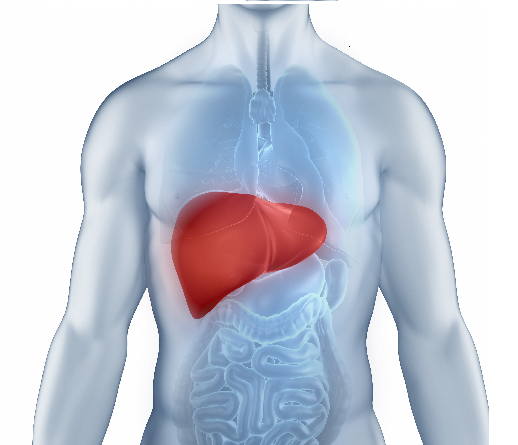World Hepatitis Day: Understand All About Hepatitis A
Basic Facts
- Hepatitis A is an inflammation of the liver that can range from mild to severe illness.
- The Hepatitis A Virus (HAV) is transmitted through contaminated food and water or direct contact with an infected individual.
- Most individuals recover completely from Hepatitis A and develop lifelong immunity. However, a small percentage of those infected may experience fatal fulminant Hepatitis.
- The risk of contracting Hepatitis A is associated with inadequate access to clean water, poor sanitation, and unhygienic practices, such as handling contaminated substances or neglecting hand hygiene.
- An effective and safe vaccine is available to prevent Hepatitis A.
What is Hepatitis?
Hepatitis is a medical condition characterized by liver inflammation resulting from various infectious viruses and non-infectious factors. This inflammation can lead to a wide range of health complications, some of which have the potential to be life-threatening. The Hepatitis virus is classified into five primary strains: A, B, C, D, and E. Although they all contribute to liver disease, they vary in transmission methods, disease severity, geographical prevalence, and preventive measures.
Understanding Hepatitis A
Hepatitis A, also known as Hep A, is an infectious liver disease caused by the Hepatitis A virus. While some individuals experience mild symptoms lasting a few weeks, others may face more severe complications that persist for several months. The primary transmission mode occurs through ingesting food or beverages contaminated with fecal matter from an infected person.
In general, the Hepatitis A virus does not pose a significant threat as most individuals recover fully. However, due to the prolonged duration of the infection, it is essential to prioritize self-care during the recovery period.
Causes of Hepatitis A
The primary cause of Hepatitis A is the Hepatitis A virus responsible for the infection. The transmission of the virus occurs through contact with the stool of an infected person. Here are some common ways the virus can be spread:
- Consumption of food prepared by an infected individual who failed to properly wash their hands after using the restroom.
- Ingestion of contaminated water or consumption of foods washed with contaminated water.
- Engaging in close personal contact with someone infected with Hepatitis A, including certain sexual activities or providing care for an ill individual.
Risk Factors of Hepatitis A
The World Health Organization attributes the risk factors for Hepatitis A to the following conditions:
- Poor sanitation
- Lack of safe water
- Living in a household with an infected person
- Being a sexual partner of someone with acute Hepatitis A infection
- Use of recreational drugs
- Sex between men; and.
- Travelling to areas of high endemicity without being immunized
Symptoms of Hepatitis A
Not everyone infected with Hepatitis A experiences symptoms. Symptoms are more likely to occur in adults compared to children. If symptoms do manifest, they typically appear 2 to 7 weeks after infection and can include the following:
- Dark yellow urine
- Diarrhea
- Fatigue
- Fever
- Grey- or clay-coloured stools
- Joint pain
- Loss of appetite
- Nausea and/or vomiting
- Abdominal pain
- Yellowish eyes and skin (jaundice)
Usually, these symptoms last for less than two months, although some individuals may experience illness for up to six months. If you have HIV, Hepatitis B, or Hepatitis C, you are at a higher risk of developing a more severe Hepatitis A infection.
It is important to note that the duration and severity of symptoms can vary from person to person, and seeking medical attention is advisable for proper diagnosis and management of Hepatitis A.
Complications of Hepatitis A
In rare instances, Hepatitis A can potentially result in liver failure. This occurrence is more prevalent among adults aged 50 and above, as well as individuals who already have an existing liver condition.
Diagnosis of Hepatitis A
Hepatitis A can be diagnosed through various methods employed by healthcare providers. These may include:
- Conducting a comprehensive medical history, discussing symptoms and potential risk factors.
- Performing a physical examination to assess any signs of liver inflammation or other related symptoms.
- Administering blood tests, specifically viral hepatitis tests, to detect the presence of Hepatitis A virus markers and assess liver function.
By combining these diagnostic tools, healthcare providers can effectively identify and confirm a Hepatitis A infection. It is crucial to consult a healthcare professional for proper diagnosis and guidance.
Prevention of Hepatitis A
Here are the preventive measures for Hepatitis A:
- Hepatitis A Vaccine: Vaccination is the best prevention method.
- Hand Hygiene: Good hand hygiene, particularly thorough handwashing after using the bathroom, is crucial.
- Safe Food and Water: Taking precautions with food and water, including properly cooked food and drinking clean water, helps prevent Hepatitis A transmission.
By following these preventive measures, the risk of contracting Hepatitis A can be significantly reduced.
Conclusion
By understanding the facts about Hepatitis A and taking preventive measures, we can reduce the risk of infection and promote liver health. Consult a specialist for proper diagnosis, guidance, and vaccination recommendations based on individual circumstances.













